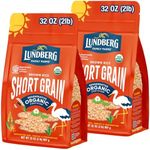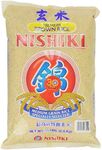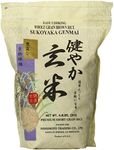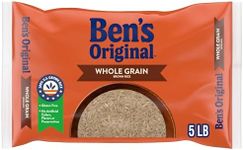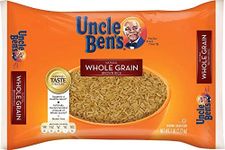Buying Guide for the Best Brown Rice
Choosing the right brown rice can make a significant difference in your meals, both in terms of taste and nutritional value. Brown rice is a whole grain that retains its bran and germ, making it more nutritious than white rice. When selecting brown rice, consider factors such as grain length, texture, cooking time, and nutritional content to find the best fit for your dietary needs and culinary preferences.Grain LengthGrain length refers to the size of the rice grains and can be categorized into short, medium, and long grains. Short-grain brown rice is plump and sticky, making it ideal for dishes like sushi or rice pudding. Medium-grain brown rice has a slightly chewy texture and is versatile for various recipes, including risotto and paella. Long-grain brown rice is light and fluffy when cooked, perfect for pilafs, salads, and side dishes. Choose the grain length based on the type of dishes you plan to prepare.
TextureThe texture of brown rice can vary from chewy to soft, depending on the variety and cooking method. Chewy brown rice retains a firmer bite and is often preferred for salads and grain bowls. Softer brown rice has a more tender texture, suitable for casseroles and soups. Consider your personal preference and the dishes you frequently cook to select the right texture for your needs.
Cooking TimeCooking time for brown rice can range from 20 minutes to over an hour, depending on the type and processing method. Quick-cooking or instant brown rice is pre-cooked and dehydrated, making it convenient for busy schedules but may have a slightly different texture. Regular brown rice takes longer to cook but offers a more traditional taste and texture. Choose based on your time availability and convenience needs.
Nutritional ContentBrown rice is known for its higher nutritional content compared to white rice, including more fiber, vitamins, and minerals. Some brown rice varieties may be enriched with additional nutrients like iron or folic acid. If you have specific dietary requirements or health goals, such as increasing fiber intake or boosting certain vitamins, check the nutritional labels to find a variety that meets your needs.
Organic vs. ConventionalOrganic brown rice is grown without synthetic pesticides or fertilizers, which can be a consideration for those looking to reduce their exposure to chemicals. Conventional brown rice may be more affordable but could contain residues from agricultural chemicals. If organic farming practices are important to you, look for certified organic brown rice. Otherwise, conventional brown rice is still a nutritious and healthy option.

